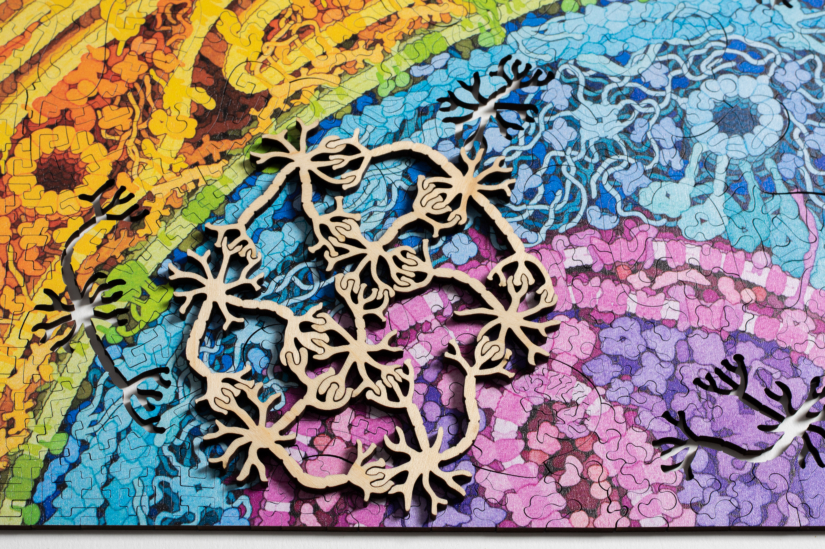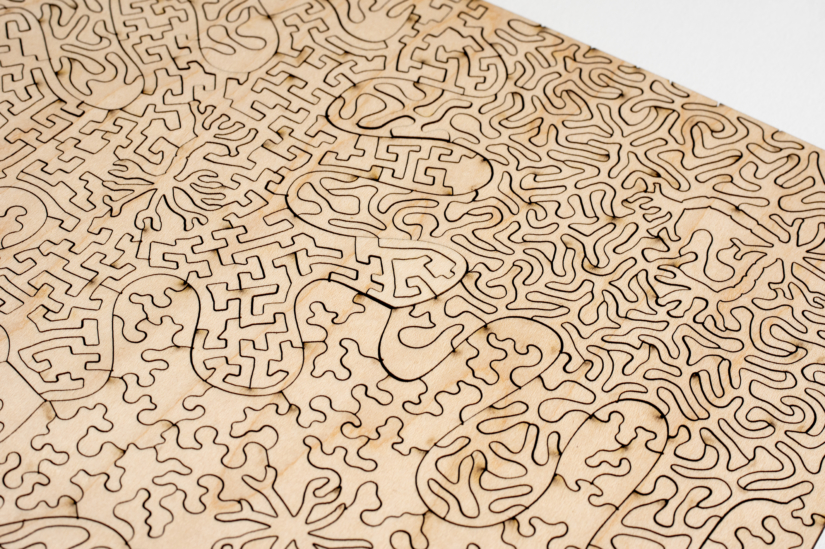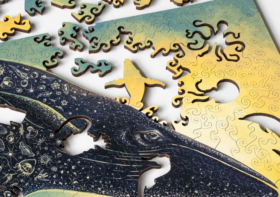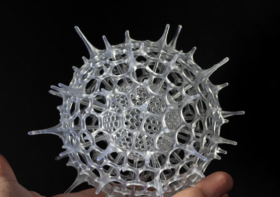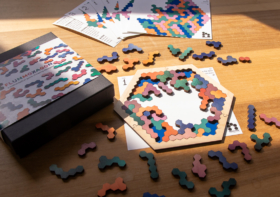Neuron and Mycoplasma Puzzles with art by David S. Goodsell
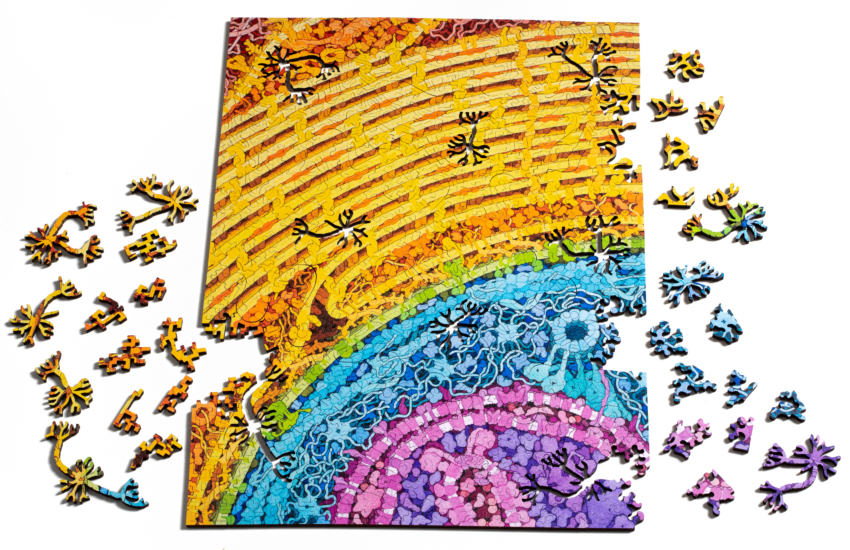
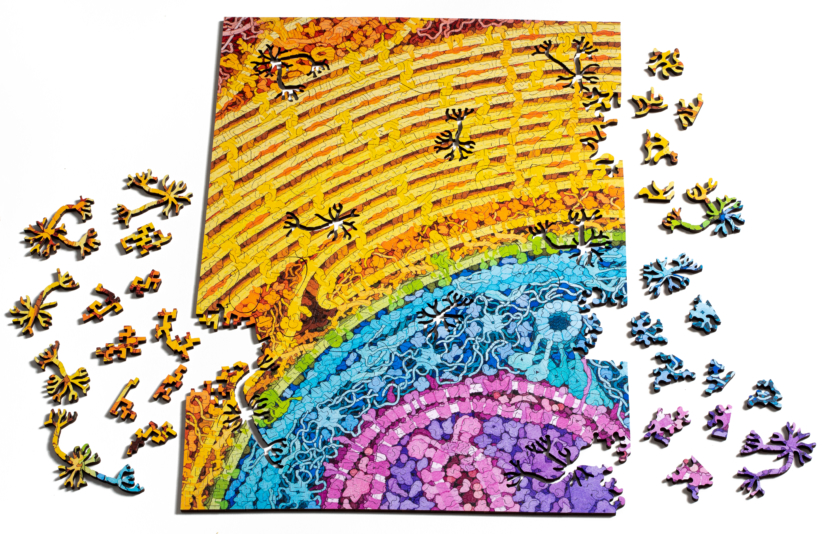
Two new biology themed puzzles from Nervous System! They feature the incredible artwork of scientist/artist David S. Goodsell, whose intricate, vibrant watercolor paintings explore the dense landscape of machinery that powers the cell. The Neuron Puzzle (423 pieces, $120) dives into the structure of an axon. That’s the part of a brain cell that carries electrical impulses to communicate with other cells. There’s also the Mycoplasma Puzzle (134 pieces, $50) a small puzzle which looks at one of the simplest known living organisms, Mycoplasma mycoides. Measuring only 300 nm this bacteria is the prototypical example of what makes life and you can see every element of it rendered in colorful detail in the puzzle. We explored some new puzzling tricks in each of these puzzles like alternate solutions and interior boundaries. Read on below to learn more about the design of each puzzle.
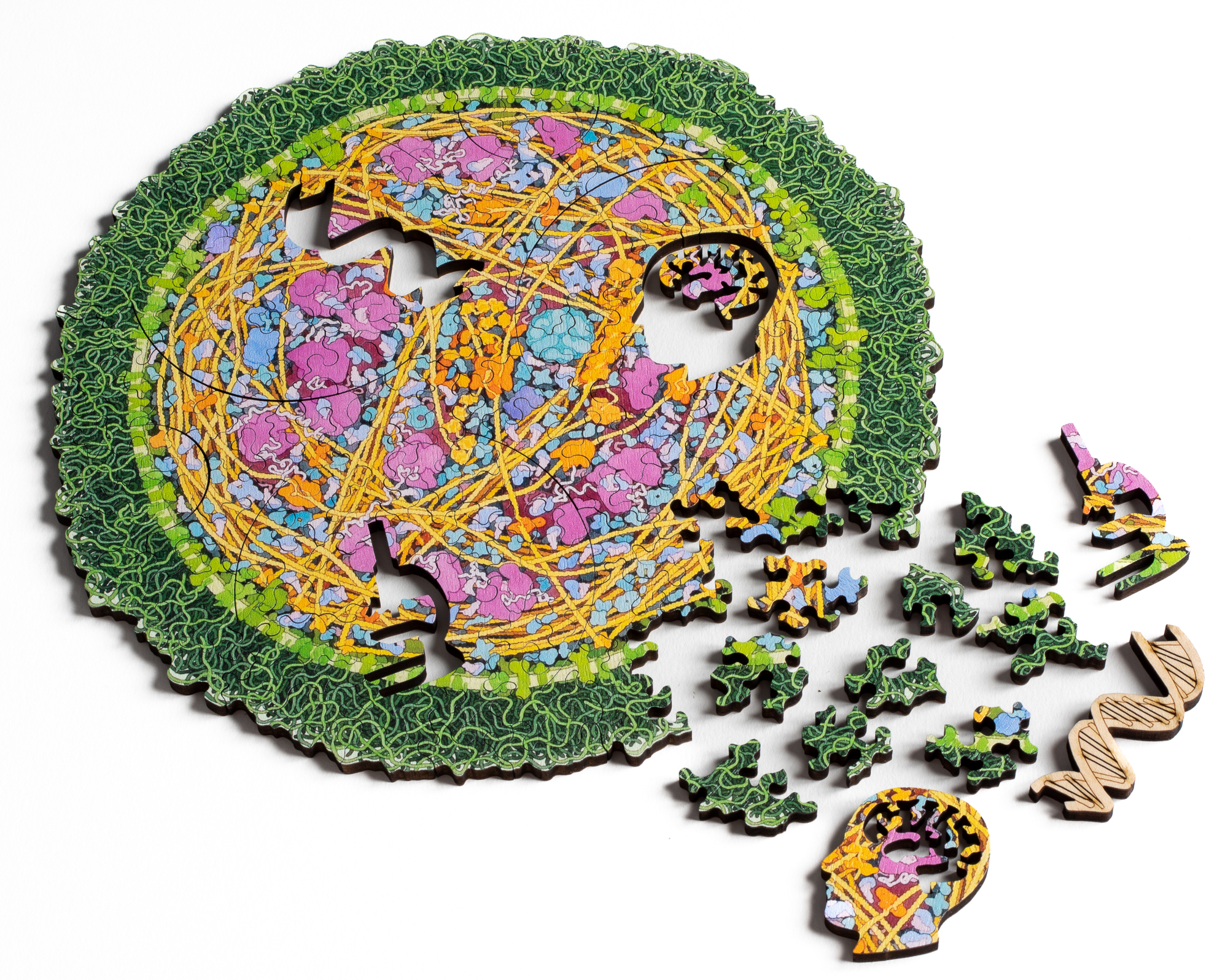
About the Artist: David S. Goodsell
I have been following David S. Goodsell’s work since I was in college in 2004. His watercolor paintings beautifully illustrate the unseen complexities of microscopic biological machinery. He is an artist and scientist at the Scripps Research Institute and Rutgers University where he works on molecular visualization. His work attempts to “make these illustrations as accurate as possible, using information from atomic structure analysis, electron microscopy, and biochemical analysis to get the proper number of molecules, in the proper place, and with the proper size and shape.”
Neuron puzzle
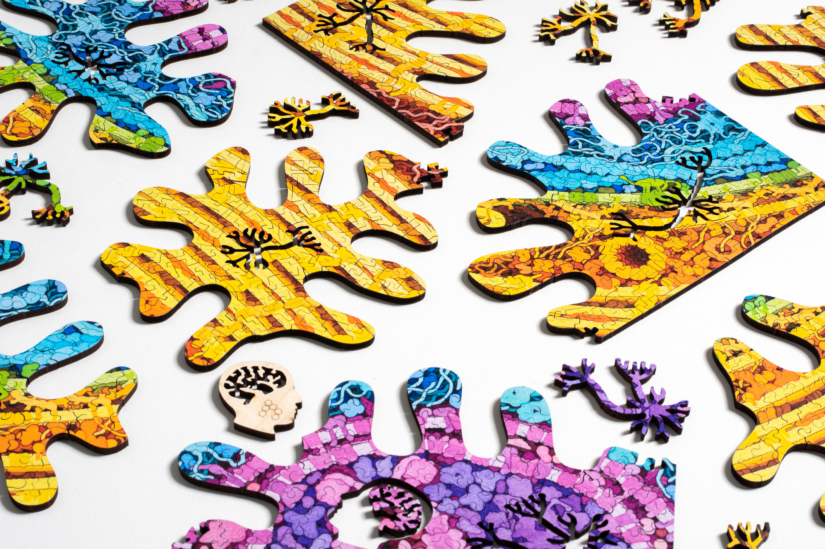
The Neuron puzzle has three different cut styles, tricky interior borders and an alternate solution that can be created with the neuron-shaped whimsy pieces hidden in the puzzle. We played on the biological theme to create cellular regions in the puzzle, each filled with one of three different cut styles (maze, matrix or coral) to create a unique puzzling experience. Each zone contains one neuron-shaped whimsy. Can you figure out how to assemble them into a mini puzzle? Like neurons in the brain they fit together into a network!
The Neuron image depicts the cross-section of an axon. Normally an axon is drawn as a reaching, branching cell, but this image goes a level deeper showing the interior cellular machinery that actually makes neurons work. The axon appears with its cell membrane in green, cytoplasm and cytoskeleton in blue; and a mitochondrion in pink and purple. The yellow zone is an oligodendrocyte wrapped around the axon and the red region is connective tissue. You can see an image key identifying all the elements in the artwork here.
Mycoplasma puzzle
This round puzzle is small but still has some tricks! It features an irregular edge and amorphous coral-style pieces. Larger circular cuts within the puzzle subdivide the puzzle into Petri dish-like regions. In a way, the interior and the exterior are flipped. The hard edges are on the inside, and the outer edges resemble the shapes of the puzzle pieces.

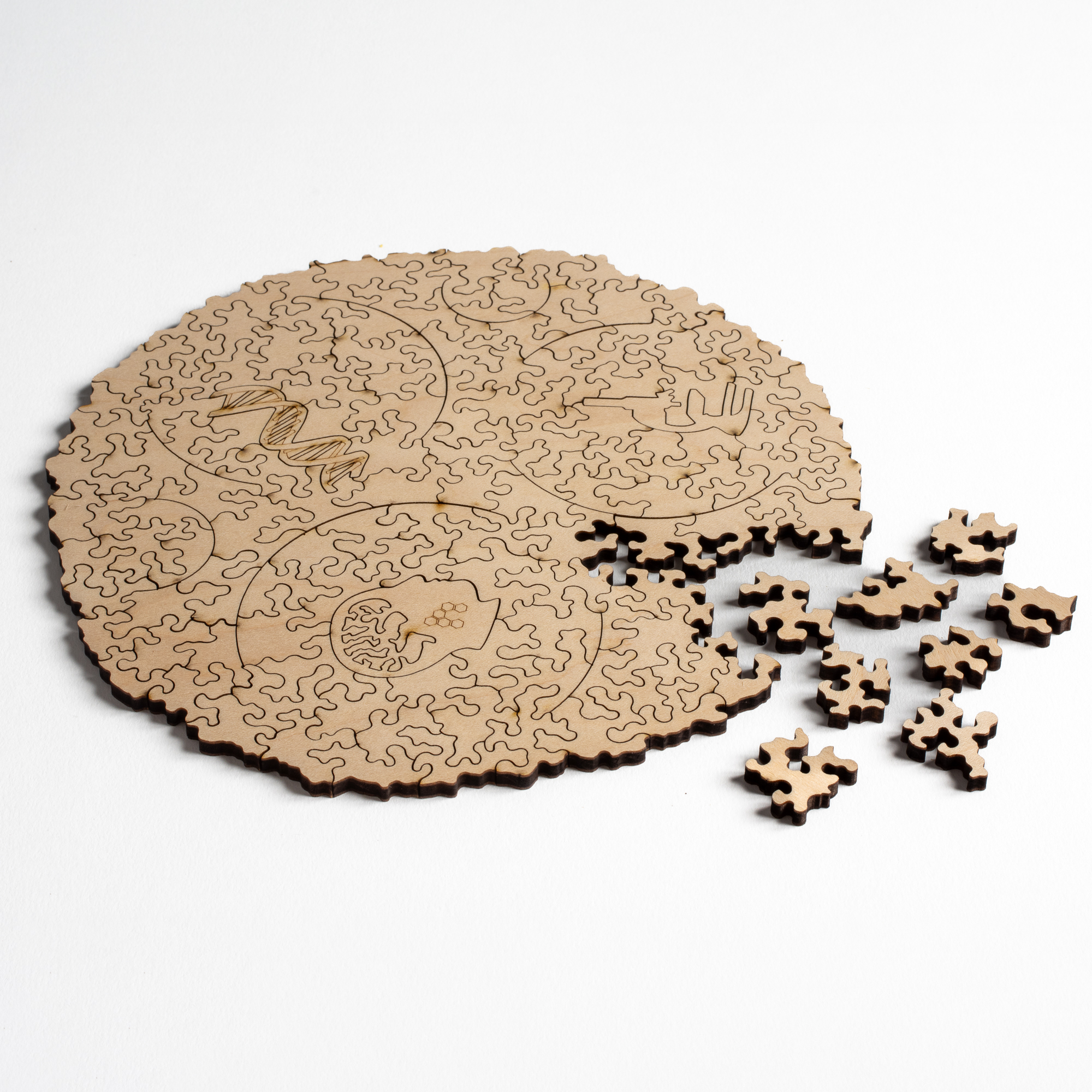

Mycoplasma mycoides is essentially the simplest form of life we have discovered. The image depicts an entire Mycoplasma bacterium: from yellow strands of DNA to pink ribosomes and fuzzy green carbohydrate chains, all the elements necessary to make a living, reproducing organism. These are the basic building blocks of life as we know it. In fact, Mycoplasma was used as the template for making the first artificial organism made entirely from DNA designed by scientists. You can see an image key identifying all the elements in the artwork here.
Puzzle Cuts
Both the Neuron and Mycoplasma puzzles feature interior cut lines that form macro design elements across the entire puzzle. The Neuron features an idea we’ve had for a while, which is a hierarchical puzzle, a puzzle of puzzles. First we grew just an 8 piece puzzle using our Amoeba piece style, and then we blew it up and grew another puzzle inside each piece. We thought this design fit with the cellular biology theme of the puzzle by making a cut that is made of cellular sub-puzzles. The Mycoplasma puzzle features partial circles embedded in the cut. The breaks in the circles allows the pieces to naturally interconnect in the cracks and adds a little trickiness to where a circle might appear.
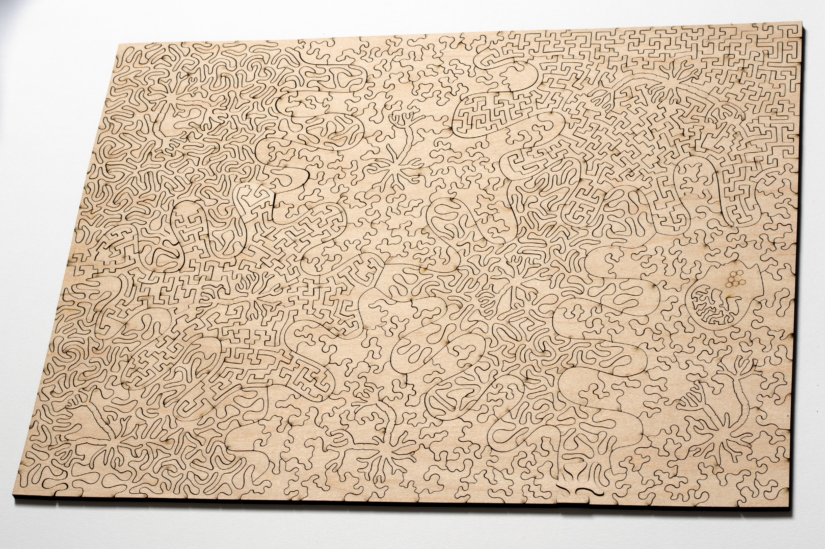
These ideas are something we began to explore with both the Spiral puzzles and the Baffling Bubbles, but with this puzzle release we’ve updated all our puzzle generators to incorporate this kind of interior cut design. On a technical level, we’ve also updated our systems to use exact Bezier splines as inputs, which then get precisely split by our puzzle pieces rather than approximated by lines. This will make it easier in the future to add new capabilities to our puzzle generators. We are thinking of allowing custom puzzles to input custom shapes as SVG vector files, not just black and white images. Another feature we are considering is adding the option for automatic color-line cutting in custom puzzles. That is detecting sharp color changes in an image and inserting cuts along those edges to add an extra challenge to the puzzle.

